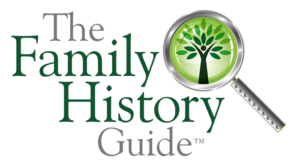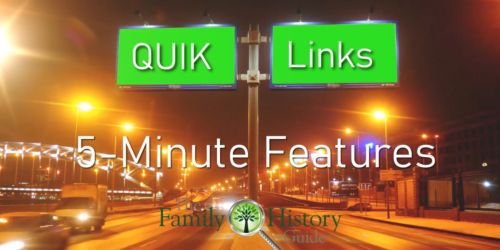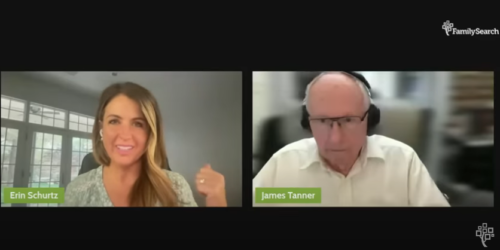Context Switching and Family History: From Foe to Friend
I am proud to say that I can walk and chew gum at the same time! I’ve done it so often that I’m quite confident in my skills. When the tasks  gets more complicated than that, however, I don’t always do so well.
gets more complicated than that, however, I don’t always do so well.
Many of us consider ourselves true multi-taskers, but there are some trade-offs there, especially when it comes to doing family history. In this article I’ll discuss some myths and facts about multi-tasking and how they relate to a potential roadblock to your progress: context switching.
“Context switching” is really a computing term that has been borrowed to describe human behavior. For example, when we multi-task with things that require planning, problem solving, and memory (see the Wikipedia article on multi-tasking), we are actually switching our context and our attention from one task to another. Depending on the tasks involved, context switching can significantly slow performance and tax our mental energy. This contradicts the notion that the more things you handle at once, the more you get done.

So is there any upside to context switching? Surprisingly, yes. Context switches, when properly managed, can be helpful to your family history experience … it will feel more like a journey of discovery rather than a series of interruptions.
Here are some ways that context switches can actually appear beneficial:
- They are perceived to be small, or they are between items that are related in nature.
- They don’t introduce new, significant learning curves.
- They appear to help you towards your objective, rather than interrupting.
- They provide a welcome change of pace.
Let’s take a look at contexts in terms of family history activities.
Family History Contexts
I believe family history is one of the richest and widely varied activities people can engage in. As you do family history work, you’ll find yourself switching between the following contexts (and many more I haven’t listed):
- Searching for records
- Learning how to use software tools and websites
- Keeping research logs
- Contacting family members and other collaborators
- Forming research strategies
- Problem-solving in research
- Learning relevant historical and geography facts
- Learning best practices for sources, notes, and conventions
Seem overwhelming? If you’re an expert genealogist, you’ve probably  learned how to organize and prioritize these activities in your mind and on your computer. But for many of us, the thought or action of switching between contexts may feel more like running into a brick wall. In fact, if we flip that bullet list about context switching that we used earlier in this article, it will take on a more discouraging tone:
learned how to organize and prioritize these activities in your mind and on your computer. But for many of us, the thought or action of switching between contexts may feel more like running into a brick wall. In fact, if we flip that bullet list about context switching that we used earlier in this article, it will take on a more discouraging tone:
- The switches seem intimidating, and the items being switched to don’t seem relevant.
- They do introduce new learning curves.
- They distract you from your objective, by making you lose focus or sapping your mental energy.
- They feel like barriers instead of a change of pace.
From Foe to Friend, with The Family History Guide
The Family History Guide excels at reducing your context  switches. It also helps you switch contexts more easily when you need to, so you can enjoy the many facets of your family history journey.
switches. It also helps you switch contexts more easily when you need to, so you can enjoy the many facets of your family history journey.
Here are some specific ways The Family History Guide can help you turn context switching from a foe to a friend:
- It has a nice, sequential learning flow that minimizes context switching.
- Its Projects, Goals, and Choices help you learn at your own pace. You can easily skip over items when needed and pick them up again later. The organization helps you see how skills and learning are related to each other.
- Its Tracker system helps you track what you’ve learned and the skills you’ve gained on each topic. This helps you gain confidence for the learning challenges that lie ahead.
- “Just-in-time” learning helps you easily find articles and videos to strengthen your knowledge and skills, without the need to go searching for them yourself.
- Summaries and Exercises in The Family History Guide help you solidify learning and get ready for the next topic or skill.
- QUIKLinks and Country pages help you find records faster and more efficiently, reducing search fatigue.
- The Beginner’s section gets novices warmed up and ready for a great family history journey.
- For more experienced users, the Research section provides best practices that help you avoid wasted time and effort in your genealogy tasks.
Thanks for reading, and may your context switches be pleasant ones!






Staying on task with The Family History Guide has been very helpful in my experience. I have found that when I’m learning something new, context switching is sometimes motivated by frustration. The sequential learning is wonderful and coupled with the online tracker you can always return to where you left off and then go forward. I really like this article because it gives voice to something we all experience. Thanks Bob!